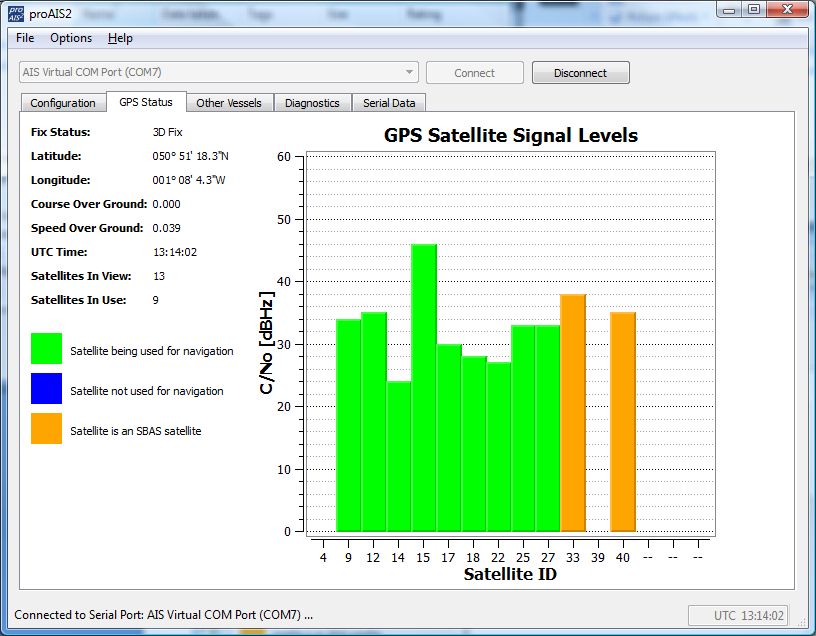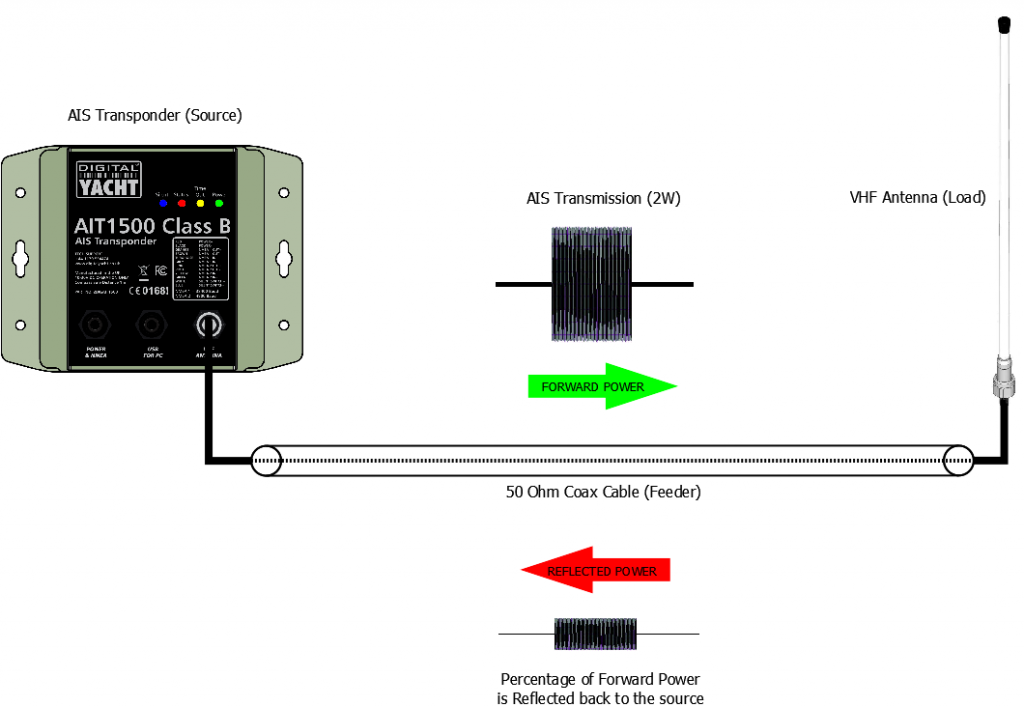
AIS Transponders are generally very reliable pieces of kit that can work for many years. Both transmitting position and receiving the positions of AIS equipped vessels within VHF range of your boat.
There are basically three things that an AIS Transponder needs in order to work correctly. An easy way to remember them is the abbreviation VGA, where….
V = Voltage, the transponder must have a good 12v DC supply voltage
G = GPS, the transponder’s GPS must be getting a good position fix
A = Antenna, the AIS/VHF antenna must be in good condition and well matched to the transponder
You can check the voltage either by connecting a Multimeter (set to measure DC Volts) across the Red and Black power wires of the transponder. Or even more easily by running the proAIS2 software; checking the value shown in the middle of the Diagnostics page (see image above).
You can also check the GPS reception using proAIS2. This is done by going to the Global Navigation Satellite System (GNSS) status tab. This will display a good “bar graph” of the satellite signals (see image below).
Checking the VHF/AIS Antenna, is the most difficult test. As a result, it is the one that we get the most technical support calls about. Therefore, we thought a blog post on the subject would help.
It is surprisingly common for yacht owners to install an AIS transponder with an antenna splitter and then find that their “old faithful” VHF antenna at the top of the mast is actually not as good as they thought it was. The reason for this, is that the top of the mast is a pretty hostile place. Over time, the antenna will suffer high levels of salt water and UV exposure, coupled with large temperature swings, vibration, G forces, etc. All of which start to degrade the materials and cabling. Alongside the occasional stepping of the mast, with possibly a through-deck connection or cable join inside the hull. You can see that there are lots of possibilities for the antenna to not be in tip-top condition.
All AIS transponders perform a continuous series of self tests, including a VHF antenna test. This is often the first time, in many years, that the VHF antenna at the top of the mast has been tested. Therefore, it is not unusual for some to fail the test. The reality is, that a VHF radio or AIS will happily get some level of reception even if you just connect a wire to it. As a result, you can appear to be receiving AIS data but your transmission is poor. This is due to an old/degraded VHF antenna that has a high Voltage Standing Wave Ratio (VSWR).
The VSWR of an AIS transponder, is a measure of the level of standing waves present in the antenna cable (feeder). Standing waves are the signals/power that do not radiate in to the air, by the antenna (load), but reflect back down the cable to the transponder (source). In an ideal world, all of the power sent to the antenna would transmit through the air to other vessels. However, this only happens if the impedance (AC resistance) of the source, feeder and load are identical (50 ohms).
This perfect matching of the impedances would result in a VSWR of 1:1. Although in “real life” pleasure boat installations, it is more likely to be between 1.1:1 and 2.5:1. In the diagnostic page of our proAIS2 software, the you can see the VSWR and will update upon every transponder transmission. By keeping an eye on the Transmit Counter you can see when a transmission takes place. You will probably see a slight change (in the decimals) each time the VSWR is measured, which is normal. If you see a bigger fluctuation, this is indicative of a poor connection or water ingress in the antenna cable/connections.
If the measured VSWR goes above 5:1, the RED Status LED will illuminate and a VSWR alarm displayed in proAIS2 (see top image).
Understanding the importance of having a good VHF antenna, with a low VSWR to get the best possible AIS transponder performance (transmit range) is key. We hope this article helps our customers have a better appreciation of this technology.











Thanks for the article. Very clear and informative. My VSWR was showing 1.5:1. I didn’t realise that the software showed this. Even if I had, I’m not too sure, until I read your article, that I understood what it meant.
I nearly purchased a new aerial, because I thought mine must be shot away by now. Thanks, you’ve saved me some money.